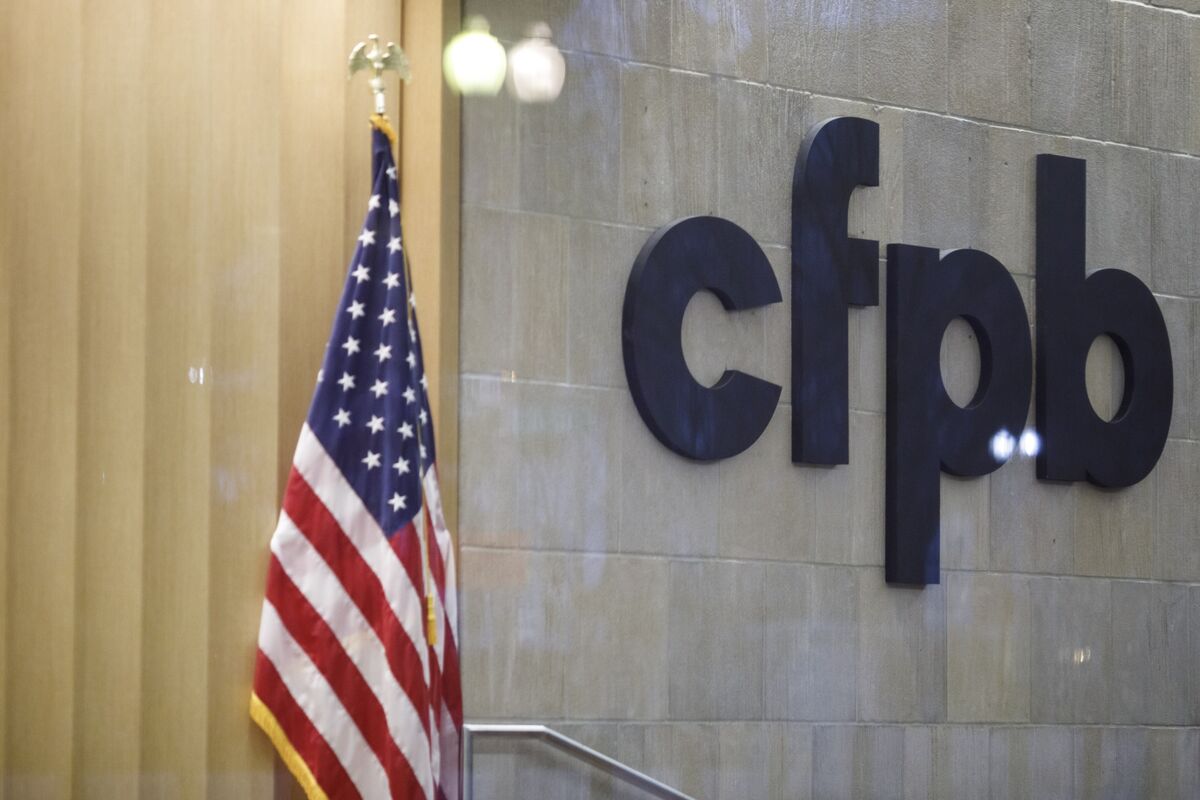

Finance
Who Pays For Ocip Insurance?
Published: November 20, 2023
Learn about Ocip insurance and find out who pays for it. Discover the financial aspects of Ocip coverage and understand its impact on your finances.
(Many of the links in this article redirect to a specific reviewed product. Your purchase of these products through affiliate links helps to generate commission for LiveWell, at no extra cost. Learn more)
Table of Contents
Introduction
Welcome to the world of OCIP insurance! If you are new to this term, you may be wondering what it is all about and who pays for it. OCIP, or Owner Controlled Insurance Program, is a type of insurance coverage commonly used in the construction industry. It is designed to provide liability and workers’ compensation coverage for a construction project.
OCIP insurance is unique because it is controlled by the project owner, and the coverage extends to all contractors and subcontractors working on the project. This centralized approach eliminates the need for individual contractors to obtain their own insurance policies, which can be time-consuming and costly. Instead, the owner secures a single insurance policy that covers all participants in the project.
In this article, we will explore who pays for OCIP insurance and the responsibilities of the various parties involved. We will also discuss the factors that can affect the cost of OCIP insurance and the benefits it provides to all stakeholders.
So, whether you are a general contractor, subcontractor, or project owner, this article will provide you with a comprehensive understanding of OCIP insurance and its financial implications.
Understanding OCIP Insurance
Before delving into who pays for OCIP insurance, it is essential to have a clear understanding of what this type of insurance entails. As mentioned earlier, OCIP stands for Owner Controlled Insurance Program. It is a risk management strategy commonly used in the construction industry to provide insurance coverage for all contractors and subcontractors involved in a specific project.
Under an OCIP, the project owner takes the initiative to procure a comprehensive insurance policy that covers the entire project. This policy typically includes general liability insurance and workers’ compensation insurance. By centralizing the insurance coverage, the owner ensures that all parties working on the project are protected and reduces the risk of coverage gaps or disputes.
OCIP insurance typically covers bodily injury, property damage, and third-party liability claims that may arise during the course of the construction project. It also provides workers’ compensation coverage for injuries or accidents that occur on the job site. The coverage period usually starts from the commencement of the project and extends until its completion.
One of the key benefits of OCIP insurance is that it provides uniform coverage for all contractors and subcontractors. This means that every party working on the project is protected under the same policy, regardless of their size or scope of work. It eliminates the need for individual contractors to obtain separate insurance policies, streamlining the insurance process and reducing administrative burdens.
It is important to note that OCIP insurance is project-specific. Once the project is completed, the coverage provided by the OCIP policy ceases. Therefore, contractors and subcontractors need to secure their own insurance coverage for future projects.
Now that we have a basic understanding of what OCIP insurance entails, let’s explore the parties involved and their respective responsibilities.
Parties Involved in OCIP Insurance
OCIP insurance involves multiple parties, each with specific roles and responsibilities. Understanding the roles of these parties is crucial to determine who pays for OCIP insurance. Let’s take a closer look at the key players in OCIP insurance:
- Project Owner: The project owner is the individual or entity that initiates the construction project. They have the ultimate authority and control over the project, and it is their responsibility to procure the OCIP insurance policy. The project owner bears the primary responsibility for paying for the OCIP insurance coverage.
- General Contractor: The general contractor is typically hired by the project owner and oversees the entire construction project. They are responsible for managing the various subcontractors, ensuring compliance with safety regulations, and coordinating the construction activities. In an OCIP insurance program, the general contractor is also covered under the owner’s policy.
- Subcontractors: Subcontractors are specialized contractors hired by the general contractor to perform specific tasks or trades. They work under the direction of the general contractor and are typically covered under the OCIP insurance policy procured by the project owner. However, it is important to note that subcontractors may be required to contribute to the insurance costs as part of their agreement with the general contractor.
These three parties are the primary stakeholders involved in OCIP insurance. The project owner assumes the main responsibility for paying for the OCIP insurance coverage, while the general contractor and subcontractors are covered under the owner’s policy.
Now that we have a clear understanding of the parties involved, let’s explore the specific responsibilities of each party in an OCIP insurance program.
General Contractor’s Responsibility
The general contractor plays a crucial role in an OCIP insurance program. They are responsible for overseeing and managing the construction project as a whole, and their responsibilities extend beyond just coordinating the various subcontractors.
Here are some key responsibilities of the general contractor in relation to OCIP insurance:
- Insurance Procurement: The general contractor is responsible for ensuring that all subcontractors working on the project are covered under the OCIP insurance policy procured by the project owner. They need to provide the necessary information and documentation to the project owner’s insurance broker or agent to ensure that the subcontractors are included in the policy.
- Subcontractor Compliance: The general contractor must ensure that all subcontractors working on the project comply with the requirements of the OCIP insurance policy. This includes providing necessary documentation, adhering to safety regulations, and maintaining appropriate insurance coverage for their own employees and workers.
- Risk Management: The general contractor is responsible for implementing risk management practices on the construction site. This involves maintaining a safe working environment, enforcing safety protocols, and addressing any potential hazards or risks that may arise during the project. By effectively managing risk, the general contractor helps mitigate the likelihood of accidents or incidents that could result in insurance claims.
- Claims Management: In the event of an accident, injury, or damage on the construction site, the general contractor plays a pivotal role in facilitating the claims process. They need to promptly report any incidents to the project owner’s insurance provider, gather relevant information, and assist in the investigation and resolution of the claim.
It is important for general contractors to have a comprehensive understanding of the OCIP insurance policy and its requirements. They should work closely with the project owner and insurance broker to ensure that all subcontractors are properly covered and that the insurance program is effectively managed throughout the duration of the project.
Now that we have explored the general contractor’s responsibilities, let’s move on to the next section to discuss the responsibilities of subcontractors in an OCIP insurance program.
Subcontractor’s Responsibility
Subcontractors play a vital role in the successful execution of a construction project and are integral to the OCIP insurance program. While the project owner is responsible for procuring the insurance policy, subcontractors have specific responsibilities to ensure compliance and contribute to the overall effectiveness of the program.
Here are some key responsibilities of subcontractors in relation to OCIP insurance:
- Insurance Documentation: Subcontractors are required to provide the necessary documentation to the general contractor and project owner to be included in the OCIP insurance policy. This may include proof of workers’ compensation insurance, liability insurance, and other documents as specified by the project owner. It is essential for subcontractors to maintain appropriate insurance coverage for their own employees and workers.
- Compliance with Safety Regulations: Subcontractors must adhere to all safety regulations and guidelines established by the project owner and general contractor. This includes following proper safety protocols, using appropriate equipment and protective gear, and implementing safety measures to prevent accidents or injuries on the construction site.
- Immediately Report Incidents: In the event of an accident, injury, or property damage, subcontractors should promptly report the incident to the general contractor and project owner. This ensures that the necessary steps can be taken to address the situation and file any insurance claims if applicable.
- Participation in Safety Training: Subcontractors may be required to participate in safety training programs or meetings conducted by the general contractor or project owner. These training sessions aim to educate subcontractors about project-specific safety protocols and ensure that everyone is aware of their responsibilities in maintaining a safe working environment.
By fulfilling these responsibilities, subcontractors contribute to the overall success and effectiveness of the OCIP insurance program. It is important for subcontractors to understand the requirements of the OCIP insurance policy and work closely with the general contractor and project owner to ensure compliance.
Now that we have explored the responsibilities of subcontractors, let’s move on to discuss the responsibilities of the project owner when it comes to OCIP insurance.
Owner’s Responsibility
As the primary stakeholder in an OCIP insurance program, the project owner assumes significant responsibility for procuring and managing the insurance coverage. The owner’s responsibilities encompass various aspects, ensuring the smooth operation of the OCIP insurance program for the construction project.
Here are the key responsibilities of the project owner in relation to OCIP insurance:
- Insurance Procurement: The project owner is responsible for procuring the OCIP insurance policy that encompasses the entire construction project. This includes obtaining general liability insurance and workers’ compensation insurance to cover all contractors and subcontractors involved. The owner needs to engage an insurance broker or agent to facilitate the procurement process.
- Policy Terms and Conditions: It is the owner’s responsibility to review and understand the terms and conditions of the OCIP insurance policy. This includes determining the coverage limits, exclusions, and deductibles. By ensuring a clear understanding of the policy, the owner can effectively communicate the requirements to the general contractor and subcontractors.
- Coordination with General Contractor: The project owner needs to collaborate closely with the general contractor to ensure that all subcontractors are included in the OCIP insurance policy. This involves providing the necessary documentation and information to the general contractor for insurance enrollment and verifying that all subcontractors meet the insurance requirements.
- Premium Payments: The owner bears the primary responsibility for paying the premiums associated with the OCIP insurance policy. This may involve budgeting for insurance costs as part of the overall project expenses. The owner is also responsible for any audit or review of the policy that may be required to determine the final insurance cost.
- Claims Management: In the event of an insurance claim, the project owner plays a critical role in facilitating the claims process. This involves promptly reporting incidents to the insurance provider and providing necessary documentation for claim assessment. The owner must work closely with the general contractor and subcontractors to gather relevant information and ensure a smooth claims procedure.
The project owner’s active involvement and commitment to the OCIP insurance program are essential for its success. By diligently fulfilling these responsibilities, owners can effectively mitigate risk and provide comprehensive insurance coverage for all parties working on the construction project.
Now that we have discussed the responsibilities of the owner, let’s explore the crucial question of who pays for OCIP insurance.
Who Pays for OCIP Insurance?
When it comes to who pays for OCIP insurance, the project owner is generally responsible for covering the cost. As the primary stakeholder and ultimate beneficiary of the OCIP insurance program, the project owner assumes the financial responsibility for procuring and maintaining the insurance coverage for the construction project.
While the project owner bears the primary burden of paying for OCIP insurance, there are cases where subcontractors may be required to contribute to the insurance costs. This contribution is often specified in the contractual agreements between the general contractor and subcontractors.
The amount of contribution can vary depending on the specific arrangement and the terms negotiated between the parties involved. Subcontractors may be required to pay a percentage of the insurance premium or a predetermined fixed amount to cover their portion of the insurance expenses. This contribution can be deducted from the subcontractor’s payment or included as a separate line item in the contract.
It is important for subcontractors to carefully review the terms and conditions of their contracts to understand the extent of their financial obligations regarding OCIP insurance. By fulfilling their contribution requirements, subcontractors ensure that they are covered under the OCIP insurance policy and comply with the project owner’s insurance program.
It is worth noting that the inclusion of subcontractors in the OCIP insurance program is advantageous for all parties involved. Subcontractors benefit from being covered under a comprehensive insurance policy that eliminates the need for them to procure their own separate insurance coverage. This streamlined approach saves time, reduces administrative complexities, and provides consistent coverage across the entire project.
Ultimately, while the project owner typically assumes the primary responsibility for paying for OCIP insurance, the financial contribution of subcontractors also plays a role in the overall insurance cost. Collaboration and clear communication between the project owner, general contractor, and subcontractors are crucial in determining who pays for OCIP insurance and ensuring the proper dissemination of insurance-related expenses.
Now that we have determined the financial responsibility for OCIP insurance, let’s explore the factors that can affect the cost of OCIP insurance.
Factors Affecting OCIP Insurance Costs
Several factors can impact the cost of OCIP insurance. Understanding these factors is essential for project owners, general contractors, and subcontractors to budget and plan for the insurance expenses associated with a construction project. Here are the key factors that can affect OCIP insurance costs:
- Project Size and Scope: The size, complexity, and duration of the construction project can influence the insurance costs. Larger projects with more extensive construction activities and longer timelines typically incur higher insurance premiums due to the increased exposure to potential risks and liabilities.
- Type of Construction: The type of construction being undertaken can also impact the insurance costs. Projects involving hazardous or high-risk construction methods, such as demolition or working at significant heights, may carry higher insurance premiums due to the increased likelihood of accidents or property damage.
- Past Claims History: The claims history of the project owner and the general contractor can impact the insurance costs for OCIP coverage. If there have been frequent claims or previous insurance issues, insurers may assess a higher premium to account for the perceived risk associated with the project.
- Location and Jurisdiction: The geographical location of the construction project and the jurisdiction within which it is being carried out can influence insurance costs. Different regions have varying insurance regulations, liability standards, and market conditions, which can impact the cost of OCIP insurance.
- Contractor Experience and Safety Record: The experience and safety records of both the general contractor and subcontractors are also factors considered by insurers. Contractors with a strong safety track record and robust risk management practices may be able to secure more favorable insurance rates compared to those with a history of accidents or safety violations.
- Insurance Market Conditions: The prevailing market conditions within the insurance industry can also impact OCIP insurance costs. Factors such as overall market supply and demand, underwriting standards, and economic factors can influence insurance premiums. In a hard market where insurers may be more cautious and selective with their underwriting, premiums may be higher.
It is important for project owners and general contractors to take these factors into account when estimating the insurance costs associated with an OCIP program. Adequate planning and budgeting for insurance expenses can help ensure that the project stays financially viable and adequately protected.
Now that we understand the factors affecting OCIP insurance costs, let’s explore the benefits that OCIP insurance provides to all stakeholders involved.
Benefits of OCIP Insurance
OCIP insurance offers a range of benefits to all stakeholders involved in a construction project. From the project owner to the general contractor and subcontractors, everyone stands to gain from the implementation of an OCIP insurance program. Here are the key benefits of OCIP insurance:
- Comprehensive Coverage: OCIP insurance provides comprehensive coverage for all parties involved in the construction project. This centralized approach eliminates the need for individual contractors and subcontractors to obtain their own insurance policies, ensuring that everyone is covered under a single policy.
- Efficiency and Streamlined Process: By eliminating the need for multiple policies, OCIP insurance streamlines the insurance process. There is a single point of contact for insurance-related matters, reducing administrative burdens and saving time for all parties involved. It also simplifies the claims process, as there is only one policy to navigate through.
- Enhanced Risk Management: OCIP insurance promotes a more robust risk management approach. By having a centralized insurance program, consistent safety protocols, and risk management practices can be implemented across all contractors and subcontractors. This helps promote a safer working environment and reduces the likelihood of accidents, which can result in insurance claims and liabilities.
- Cost Savings: OCIP insurance can lead to potential cost savings for both project owners and contractors. Insurance costs are typically spread across all parties involved, reducing the financial burden on individual subcontractors. Additionally, the elimination of duplicate insurance coverage and administrative costs can result in cost savings for the project owner.
- Improved Project Control: With OCIP insurance, project owners have greater control and oversight over the insurance program. This allows for a consistent and uniform approach to insurance coverage, ensuring that all subcontractors meet the necessary insurance requirements. It also provides project owners with a clear understanding of their insurance liabilities and helps them manage potential risks more effectively.
- Market Advantage: For contractors and subcontractors, being a part of an OCIP insurance program can provide a market advantage. Having the necessary insurance coverage in place can instill confidence in project owners and give contractors a competitive edge when bidding for projects. It demonstrates a commitment to safety, risk management, and compliance with insurance requirements.
Overall, OCIP insurance offers a range of advantages, including comprehensive coverage, streamlined processes, cost savings, enhanced risk management, and market advantages. It benefits project owners, general contractors, and subcontractors by reducing insurance complexities, ensuring uniform coverage, and promoting a safer working environment.
Now that we have explored the benefits of OCIP insurance, let’s conclude our article.
Conclusion
OCIP insurance, or Owner Controlled Insurance Program, is a valuable risk management tool in the construction industry. It provides comprehensive insurance coverage for all contractors and subcontractors involved in a construction project, with the project owner typically bearing the primary responsibility for paying the insurance premiums. The general contractor and subcontractors are covered under the owner’s policy, although subcontractors may be required to contribute to the insurance costs based on contractual agreements.
Understanding the roles and responsibilities of each party involved in an OCIP insurance program is crucial to ensure a smooth and efficient insurance process. The project owner is responsible for procuring the insurance policy, while the general contractor oversees the insurance enrollment and compliance of subcontractors. Subcontractors must fulfill their obligations, including providing necessary documentation and adhering to safety regulations.
Several factors influence the cost of OCIP insurance, such as the size and scope of the project, the type of construction, claims history, location, contractor experience, and market conditions. Considering these factors enables project owners and contractors to effectively budget for insurance expenses.
Despite the associated costs, OCIP insurance offers numerous benefits. It provides comprehensive coverage, streamlines the insurance process, promotes risk management, and can lead to cost savings for all stakeholders. It also enhances project control, facilitates a safer working environment, and gives contractors a market advantage.
In conclusion, OCIP insurance is an essential risk management tool that provides comprehensive coverage and numerous benefits for construction projects. By understanding the responsibilities, costs, and advantages of OCIP insurance, project owners, general contractors, and subcontractors can navigate the insurance process effectively and ensure the success of their projects.














